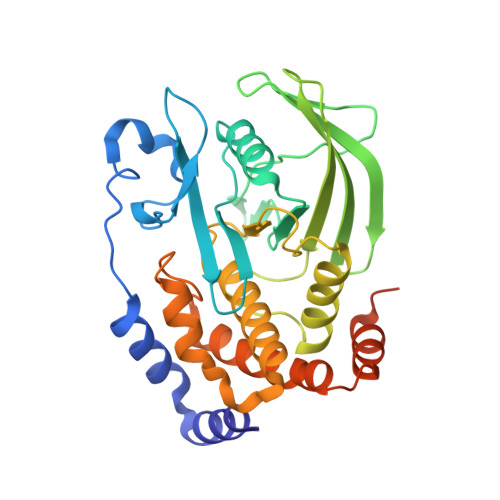Native SAD phasing at room temperature.
Greisman, J.B., Dalton, K.M., Sheehan, C.J., Klureza, M.A., Kurinov, I., Hekstra, D.R.(2022) Acta Crystallogr D Struct Biol 78: 986-996
- PubMed: 35916223
- DOI: https://doi.org/10.1107/S2059798322006799
- Primary Citation of Related Structures:
7L84, 7LVC, 7MM1, 7RIN - PubMed Abstract:
Single-wavelength anomalous diffraction (SAD) is a routine method for overcoming the phase problem when solving macromolecular structures. This technique requires the accurate measurement of intensities to determine differences between Bijvoet pairs. Although SAD experiments are commonly conducted at cryogenic temperatures to mitigate the effects of radiation damage, such temperatures can alter the conformational ensemble of the protein and may impede the merging of data from multiple crystals due to non-uniform freezing. Here, a strategy is presented to obtain high-quality data from room-temperature, single-crystal experiments. To illustrate the strengths of this approach, native SAD phasing at 6.55 keV was used to solve four structures of three model systems at 295 K. The resulting data sets allow automatic phasing and model building, and reveal alternate conformations that reflect the structure of proteins at room temperature.
- Department of Molecular and Cellular Biology, Harvard University, 52 Oxford Street, Cambridge, Massachusetts, USA.
Organizational Affiliation:


















